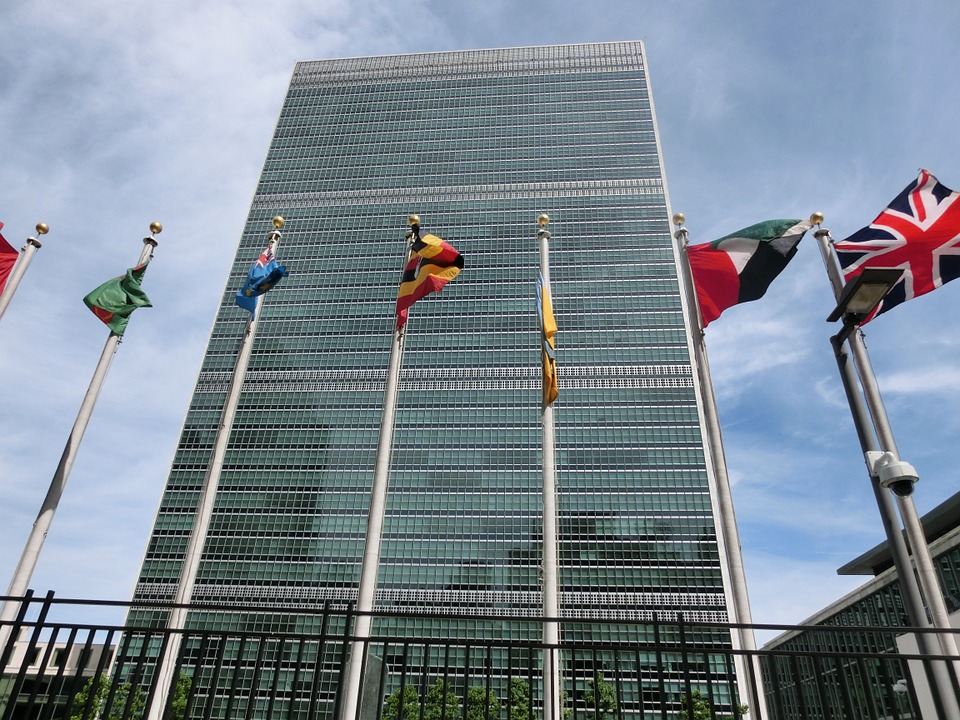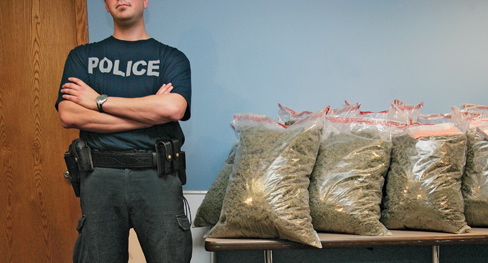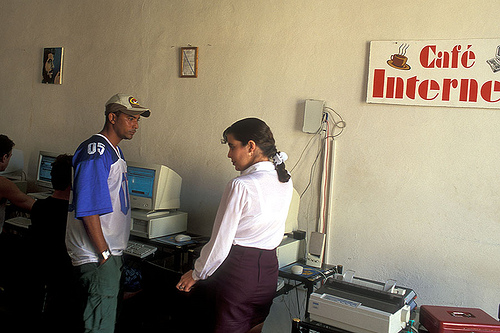A couple of weekends ago, I chaired a committee at McGill University’s high school Model United Nations conference. 180 excited high school students simulated the United Nations World Conference on Disaster Risk Reduction, working together to address topics like gender, poverty, and technology, all within the context of sustainable risk mitigation of natural disasters. By the end of the three-day conference, we had passed a resolution that focused on solutions ranging from education of local populations, to regional agricultural subsidies, to eco-friendly technologies in disaster risk areas.
Disaster Risk Reduction (DRR), as defined by the United Nations Office for Disaster Risk Reduction (UNISDR), is a proactive strategy that “aims to reduce the damage caused by natural hazards […] through an ethic of prevention.” It is the concept and practice of reducing disaster risks through systematic efforts to analyse and reduce the causal factors of disasters; in this sense, it is different than disaster relief, which concerns itself with the immediate aftermath of a natural disaster. Indeed, DRR is in part meant to reduce the costs of disaster relief: studies have indicated that investment in DRR is highly cost-effective, and that it has a profound impact on casualty numbers when natural hazards strike. Disaster risk reduction has also increasingly come to be associated with the concept of sustainable development: “in order for development activities to be sustainable,” notes UNISDR, “they must also reduce disaster risk.”
In 2005, 168 governments adopted the Hyogo Framework for Action (HFA) 2005-2015 at the World Conference on Disaster Risk Reduction. A 10-year action framework, HFA aims to assist the efforts of nations and communities to become more resilient to natural hazards. It offered guiding principles, priorities for action and practical means for achieving disaster resilience for vulnerable communities. The context of the Model United Nations committee we simulated last month was thus a reappraisal of national and international efforts toward disaster risk reduction: what had been done, and what still needs to be done?
A Global Assessment Report on Disaster Risk Reduction in 2009 found varying levels of progress on the HFA, noting significant progress in strengthening the coping capacity of regions and in improving early warning systems but highlighting the slow progress of implementing DRR policies into social, economic, urban, environmental and infrastructural development. In past resolutions, the UN General Assembly has recognized the need for “stronger interlinkages among disaster risk reduction, recovery and long-term development planning”, as well as the need to integrate a variety of perspectives (including a gendered one) into the design and implementation of disaster risk management. In 2014, UNISDR published a progress report outlining the main challenges faced by governments in disaster risk reduction: insufficient levels of implementation; the need to strengthen local capacities to implement disaster risk management; the integration of climate change issues in DRR, difficulties in obtaining political and economic commitment; and poor coordination between stakeholders. Keeping these challenges in mind, students thus decided to focus on the relationship between disaster risk reduction and development, aiming to improve the interaction between DRR strategies and development policy.
What surprised me the most was the enthusiasm and passion of the student delegates. There were other, more “exciting” committees being simulated at the conference: the NATO committee was set to discuss Russian intervention in Ukraine, and the UN Disarmament and International Security community was scheduled to focus on biological and chemical weaponry. I had assumed that my delegates would be bored after hours of discussing microfinancing, early-warning systems, and risk prevention training. At Model United Nations conferences, these issues are often considered less “fun” because the level of debate is substantially less contentious and vitriolic than in, say, the Security Council.
I was wrong. The delegates – many of them barely out of middle school – set out to tackle the issue agenda with zeal, offering innovative solutions, making passionate speeches, and exhibiting a level of cooperation and negotiation I had rarely seen at a Model UN conference. Disaster Risk Reduction is a highly complex topic: it touches upon issues of climate change, world poverty, agriculture, and gender. Despite this, the students displayed incredible maturity and insight in their approach to the issue.
The solutions recommended by the students mainly operated in three categories: technology, economic, and social/educational. In terms of technology, delegate solutions ranged from color-coded natural disaster warnings to increasing the resilience of infrastructure. New building and irrigation technologies were proposed, including the use of materials such as bamboo, the restoration of degraded soil, and the use of hydrogel.
In terms of education, delegates focused on early-warning methods and the promotion of new understandings, including the “implementation of disaster-risk curriculums” in primary and secondary schools focusing on both safety drills and disaster awareness in science and history classes. The students also called for the creation of United Nations “training camps”, led by disaster-risk-reduction experts, which would provide training on proper safety procedures and first response skills.
The economic dimension was particularly focused on reducing the dependence of citizens in high-disaster-risk areas on natural resources or cash crops. Students encouraged nations to strengthen their agricultural industries in various ways, including “Cereal Systems Initiatives” – geared towards increasing cereal productivity – and agricultural subsidies. Solutions also promoted economic diversification from “single commodity agrarian societies” by encouraging the creation of “more appealing investment climates” and working with NGOs to promote small business entrepreneurship.
Notably, the resolutions also included provisions for climate change risks, including working with the IGA Climate Prediction and Applications Center (ICPAC) and elaborating on the work of the Regional Drought Mechanism.
The most eye-opening moment, however, came when students started focusing on funding. Before they submitted their draft resolutions, they were told that they had to have an idea of where the funding was going to come from: were countries going to pledge certain amounts of aid? Would funding come out of the UN budget? In other words, how were the delegates planning to make their solutions happen?
To address this, we were assisted by the intervention of a qualified outside speaker, Dr. Heather McKeen-Edwards of Bishop’s University. The global governance expert – armed with a PowerPoint presentation chock full of graphs and charts – emphasized the importance of funding schemes in disaster risk reduction. The delegates were visibly surprised when they found out that only $13.5 billion USD (less than 2% of total funding for humanitarian aid) had gone to actual disaster risk reduction in the past two years. She further noted that the distribution of the present funds is highly uneven, with lower-middle-income countries like Bangladesh or Ethiopia getting most of it and low-income countries like Haiti being left out. After hearing this talk, the students were left with yet another problem to solve: how would they implement their solutions with such little funding to go around?
The question, of course, is not a new one. In 2010 and 2011, a mere 0.4 percent of global official development aid was devoted to disaster risk reduction, despite UN agencies, ranging from the Food and Agriculture Organization to the UN Development Programme, consistently recommending more investment in sustainable disaster risk mitigation strategies. Indeed, this issue is more relevant than ever, with countries from all over the world having convened in Paris for the 21st UN summit on climate change (COP21).
Investing in disaster risk reduction, rather than pledging money to disaster management after the fact, makes economic sense. Twenty years ago, the government of Mozambique “sought a few million dollars” to invest in flood management, to no avail. A few years later, the country was devastated with floods that created a humanitarian need of over $100 million.
Aid, some argue, also needs to move from the financing of “standalone projects” towards the “integration of risk at the heart of vulnerable countries’ development.” Moreover, weak financing also stems from the lack of dedicated financing mechanisms for DRR: the Global Facility for Disaster Reduction and Recovery, managed by the World Bank, is the only source of pooled funding that focuses exclusively on reducing the risk of disaster.
Other than funding needs, disaster risk reduction efforts are plagued by incoherent international policy and less-than-ideal transparency on DRR spending by aid donors. The Climate and Development Knowledge Network argues that “much more work is needed to make international disaster risk reduction efforts long lasting and effective.”
Where are some opportunities for change? For one, natural disaster global policy is finally starting to shift towards risk, and it looks like the post-2015 Development Agenda could make the reduction of disaster risk a goal or indicator of successful development. Further, climate adaptation financing is increasingly likely to fund the reduction of disaster risk as a core target.
At the end of the day, the fundamental question always is: do we wait until the next natural disaster, or do we act on the problem now?




